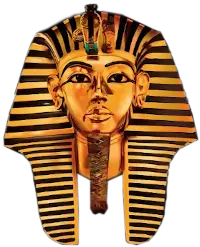
their spheres, revolve from West to East, while around all there is the peripheral fire.
This motion of the heavenly bodies is regulated in the velocity, and produces the harmony of the spheres.
(Roger's Students' History of Philosophy p. 14-22).
(Bakewell's Source Book of Philosophy) (Life and Tenets of Pythagoras).
(Ruddick's History of Philosophy) (Life and Tenets of Pythagoras).
(Fuller's History of Philosophy) (Life and Tenets of Pythagoras).
(Turner's History of Philosophy: p. 40-43).
(History of Ancient Egypt by John Kendrick vol. I p. 401-402)
(Plato's Phaedo, 85E).
(Aristotle's Metaphysics I 5; 985b, 24; and I 5; 986a, 23).
3. The Eleatic Philosophers.
The Eleatic Philosophers include (a) Xenophanes, (b) Parmenides, (c) Zeno and (d) Melissus. They deal with the problem of change, and are credited with introducing the notions of Being and Becoming. The term Eleatic is derived from Elea, a city in Southern Italy, where these men are said only to have visited.
(a) XENOPHANES
Born at Colophon, in Asia Minor, about 370 B.C., Xenophanes is credited with the following doctrines:--
(i) THE UNITY OF GOD
Men err when they ascribe their own characteristics to the gods: for God is all eye, all ear, and all intellect. Again, since there is no Becoming, and since Plurality depends upon Becoming, therefore there is no Plurality. Consequently all is one and one is all.
Topics
Greek Philospohy is Stolen Egyptian Philosophy
The Memphite Theology is the Basis of all Important Doctrines of Greek Philosophy
Greek Philosophy was Alien to the Greeks
Greek Philosophy was the offspring of the Egyptian Mystery System
The Egyptians Educated the Greeks
The Curriculum of the Egyptian Mystery System
The Pre-Socratic Philosophers and the teaching Ascribed to them
The Athenian Philosophers
1. Socrates
2. Plato
3. Aristotle